If you’re having trouble with your brakes, it’s time to take a look at them and see if there is something that can be done to fix the issue. Brake pads are one of those things that often go unnoticed until they start making noise or stopping your car suddenly on the road.
By following these simple steps, you should be able to change brake pads on your Volkswagen Tiguan in no time at all. Make sure to keep track of which screws need tightening as well – doing so will help ensure that everything stays together while you’re working on the car.
Be careful when removing old pads – do not force anything and try not to damage any parts of your VW Tiguan in the process.
Contents
How To Change Brake Pads on VW Tiguan
If you’re having trouble braking in your VW Tiguan, it may be time to replace the brake pads. To do this, follow these simple steps:
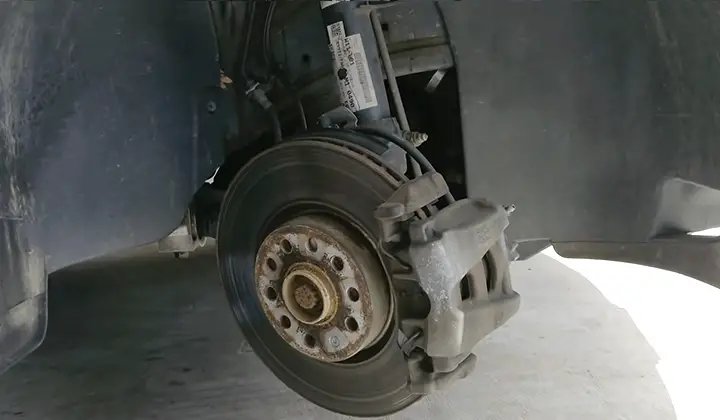
Carefully Remove the Wheel
Be very careful when taking off the wheel. If you rush this process, you may end up damaging your Volkswagen Tiguan’s brake system in some way.
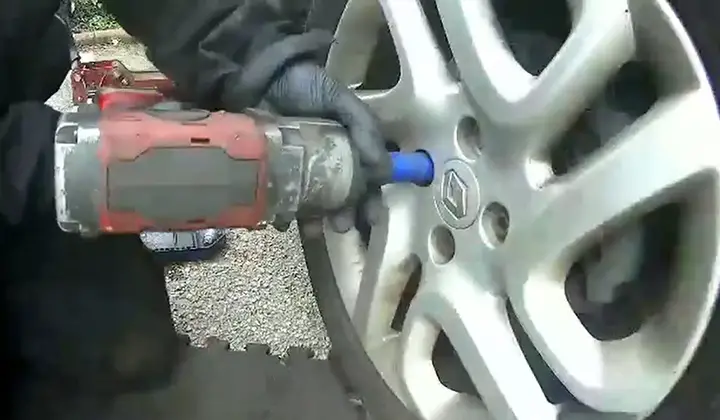
You’ll need to remove the two slider bolts first before carefully pivoting and sliding out the old pads.
Remove Slider Bolt
Once you’ve removed the wheel, be sure to remove the slider bolt as well so that you can access and replace your brake pads.
Pivot Brake Caliper Up
Before getting started, make sure to pivot your VW Tiguan’s brake caliper up so that it is fully exposed from underneath the vehicle. This will make replacing your brakes much easier overall.
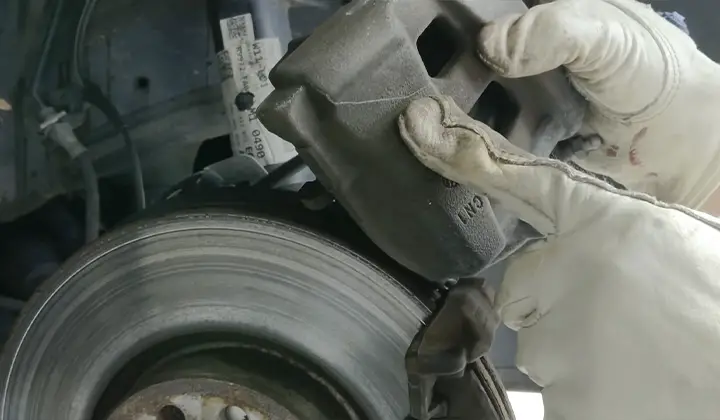
Slide Out Old Brake Pads
Now it’s time to slide out those old brake pads. Be gentle with them – if they’re not replaced properly, they could cause even more damage down the line.
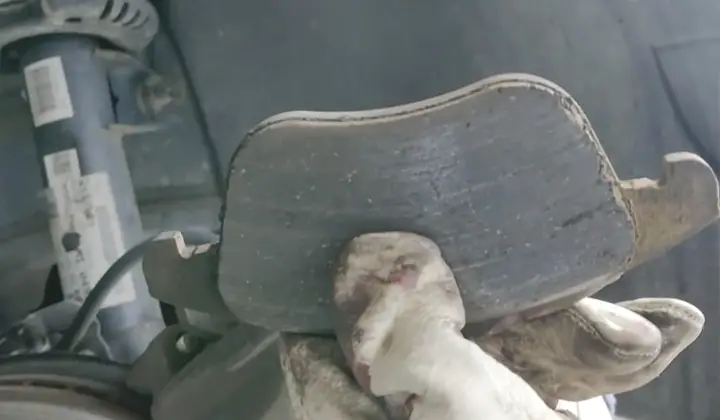
Replacing them is a simple task that only takes about five minutes – get started now.
Replace Retaining Clips
Before you can replace the brake pads, you’ll need to remove the retaining clips. To do this, slide a thin blade between the outer edge of one clip and the inner lip of the housing. Pry gently until it pops out. Repeat on both sides.
Slide in New Brake Pads
After removing the retaining clips, slide your new brake pads into place using a rubber mallet or hammer. Be sure to match up the contours of each pad with its mating surface on each caliper bracket.
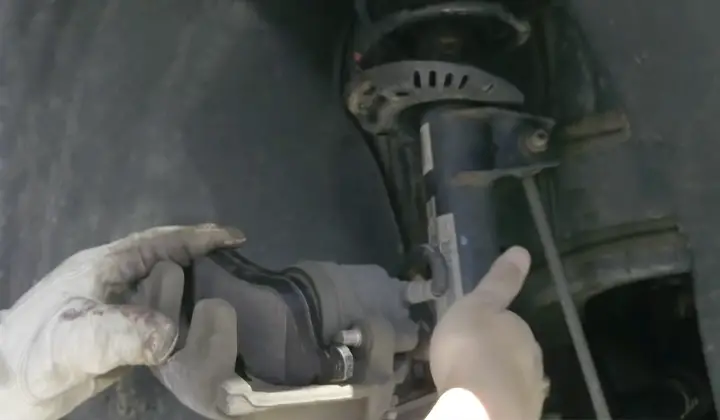
Make sure there are no air bubbles trapped underneath any of them before securing them by pressing down firmly with a wrench.
Once they’re in place、 check that all four corners are seated against their corresponding brackets and then secure them with two screws (one at either end).
Monitor the Brake Fluid Level
If your brakes are not working properly, one of the first things you should do is check to see if there is any fluid leaking from the calipers or rotors.
If there is a significant leakage, this may be a sign that your brake pads need to be replaced. You can also monitor the brake fluid level by checking for an indicator light on your dashboard.
Reposition the Caliper
If you notice that your brakes are not performing as they should, it may be necessary to reposition the caliper in order to get them back up to par.
To do this, you will need to loosen all of the bolts holding down both halves of the rotor and then lift each half off of the car’s axle shafts using a wrench or socket set appropriately size for your particular car model (10mm / 8mm).
Be sure to replace any worn or damaged parts while doing this.
Reinstall Slider Bolt
Once you have successfully moved and re-aligned the caliper, it’s time to install its slider bolt assembly back into place.
This part attaches directly to one side of each rotor and has several different locking mechanisms which must all line up correctly in order for them to get locked down securely.
Make sure to use extreme caution when reinstalling this part as even small mistakes could lead to the failure of your brakes altogether.
Test Drive Under Safe Conditions
Before driving your Volkswagen Tiguan under normal conditions again, make sure it has been tested out safely with only minimal braking force applied at slow speeds first.
When You Need to Change Your Brake Pads on VW Tiguan
If you’re driving a VW Tiguan, it’s important to keep your brake pads in good condition. Over time, they can wear down and stop working properly. You’ll need to replace them regularly if you want to avoid getting into any accidents.
Noisy or Grinding Noise When You Brake
Brake pads are a vital part of your Volkswagen Tiguan’s braking system and when they start to wear down, you’ll likely hear a noisy or grinding noise whenever you brake.
This issue can eventually lead to the pads becoming too hot to touch and cause your VW Tiguan to stop in sudden stops.
Your VW Tiguan Stop in Tricky Conditions
If you’ve been having trouble stopping in tricky conditions such as on wet roads, it may be because your VW Tiguan’s brake pads are worn out.
When this happens, the brakes will not have enough grip on the road surface which can make it difficult to stop quickly in these situations.
The Pads Are Starting to Discolor and Rust Away
As brake pads get older, they tend to start discoloring and rusting away, which can lead to poor braking performance and even more problems with stopping in tricky conditions.
Your VW Tiguan Is Having Trouble Making Turning Left Or Right On Gravel Roads
Worn-out brake pads may also cause issues with turning left or right on gravel roads due to insufficient ability for the brake’s friction material (stuff that makes friction) to adhere properly onto the rotor surfaces during turn-in-time.
This problem is often referred to by mechanics as “wheel lock”. Also, worn out, rusty break pads can cause pitting on brake rotors.
FAQs
Can I change my brake pads myself?
You can change your brake pads on your own without the help of a professional but it is important not to rush and do it.
Following some safety guidelines can make the process easier and safer.
Should you replace all 4 brake pads at once?
Many people believe that it’s best to replace all four brake pads at once, but this might be a costly mistake.
Firstly, if the brakes are brand new and never used, there’s no need to replace them all at once.
Secondly, if the brake pads are worn out and ready for replacement, it’s better to do so one at a time.
Are ATE brake discs any good?
ATE brake discs are the best brake discs you can buy. They have been tested and proven to reduce stopping distance, stop on a dime and last for years.
How much does it cost to change brake pads at Volkswagen?
Volkswagen brake pads are considered to cost anywhere from $150 to $400 just for one set of new brake pads.
Conclusion
Brake pads are an important part of your car’s safety. To change brake pads on VW Tiguan brake pads, you will need to remove the wheel and the tire. Next, unscrew the bolt that attaches the pad to the caliper – be careful not to lose any pieces.
After removing the old pad, place it in a trash bag or disposal container so you can reuse it later if needed.
Clean all surfaces around where new pads will go before installing them with brake cleaner and a rag – this will prevent rusting and corrosion from happening again in future years.
Before reattaching everything back together, make sure to tighten down all bolts securely using a torque wrench; this is especially important when replacing brakes for the first time.
